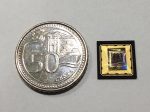The Internet of Mining Things delivers the next wave of productivity
Through IoT, this next level of optimisation can be achieved for a single mine or a federation of mines, rail and ports. The Internet of Things (IoT) is increasing the connectedness of people and things on a scale that once was unimaginable. The magnitude of this evolution is momentous with more than 80 billion Internet-connected devices projected to be in use in 2024, up from less than 20 billion in 2014. When we then couple the data produced, and processes involved, in the interaction of things-to-things and things with people what results is a powerful model upon which to drive the digitisation and transformation of companies, industries and whole nations. The ability to use standard Internet technologies, such as unmodified Ethernet, throughout, from the enterprise all the way down to individual field devices enables new levels in connectivity for people, processes, data and things, ultimately providing greater productivity, better utilisation of assets, and improved decision-making to industrial companies. According to Michael Boland, distinguished systems engineer at Cisco, “The IoT is connecting people in more relevant, valuable, and meaningful ways; delivering the right information to the right person or machine in real time. Data is being leveraged in more useful ways for better decision-making. It has applicability across all markets; private sector and governments.” The mining industry has a lot to gain from the connectivity that the IoT delivers. Mining operations around the world are on an automation curve – they are applying technologies processes to automate their key functions to gain efficiencies in production, however these initiatives are often focused and restricted within production silos. “We see a significant number of mines that have data locked away in individual systems but now want to federate that data together, instigate new processes, involving their people in new ways to achieve better […]

